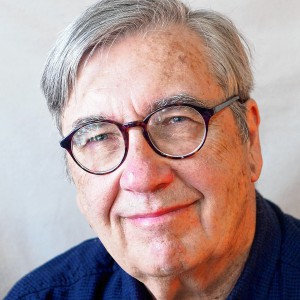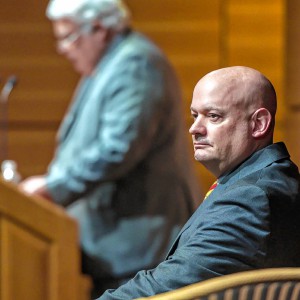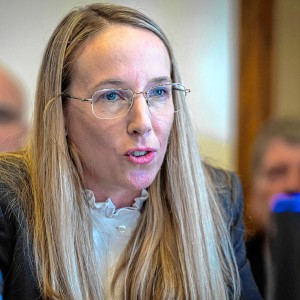Vermont targets ways to reverse hunting decline
| Published: 12-29-2019 10:12 PM |
Matt Lacey, a bit tongue-in-cheek, referred to himself recently as “just some tree-hugging liberal from central Ohio.”
That was until last year, when the 23-year-old moved to the Green Mountain State, enrolled in Vermont Law School and began learning how to hunt.
He started with squirrels in Hinesburg, Vt., then hares in East Charleston, Vt., but came home empty handed each trip. It wasn’t until January that he bagged his first game: a couple of cottontail rabbits near Vergennes, Vt., which he brought back to his Burlington apartment to dress on his porch, watching YouTube tutorials in the freezing weather.
But Lacey’s experience bucks the broader trend in Vermont.
Hunting license sales between 2016 and 2018 were down in every county, state data shows. Officials believe fewer and fewer younger people want to hunt. Demographic shifts — like increased urbanization, changing attitudes on killing animals and migration away from rural areas — are behind much of the decline, said Chris Saunders, project coordinator for the Department of Fish and Wildlife.
And this cultural change in a state steeped in outdoor tradition could have dire impacts.
“It’s a financial burden on the department, it’s a threat to conservation in the state, and it’s also a threat to management in the state,” Saunders said.
“We’re not there yet, but if this trend continues, we may be,” he said.
Article continues after...
Yesterday's Most Read Articles
 Upper Valley winter shelters kept dozens warm and dry
Upper Valley winter shelters kept dozens warm and dry
 Former principal of South Royalton School released from prison
Former principal of South Royalton School released from prison
 Owner of Friesian horse facility ordered to pay care costs for seized animals
Owner of Friesian horse facility ordered to pay care costs for seized animals
Outside the Barre Fish and Game Club in late October, Gov. Phil Scott and Fish and Wildlife Commissioner Louis Porter spoke about the status of hunting and urged people to keep the sport alive.
“Take your son, daughter, niece, nephew, cousin or mentee, and learn what the tradition is all about,” Scott told attendees.
They were doing so because in Vermont counties, sales for hunting and combination licenses (which cover hunting and fishing) fell by an average of 7.5% between 2016 and 2018, according to state data.
The largest declines came in Bennington and Windham counties, at 10% each. Chittenden, Washington and Windsor counties each saw a 9% drop. Essex, Franklin and Grand Isle counties remained the most stable, each declining by 5%.
Those figures don’t include lifetime, permanent or youth licenses.
The trend can be traced back as far as 1987, according to state data. More than 90,000 licenses were sold that year to people age 18 to 64. Fewer than 50,000 were sold in 2017.
“We expect this trend to kind of continue,” Saunders, the fish and wildlife coordinator, said.
Changes in Vermont’s hunter population reflect those in its general population, he said, particularly increased urbanization and rural flight.
“Hunting is a rural pastime, and when you have demographic issues like we do in Vermont, it’s no surprise that hunting participation, hunting numbers are declining,” he said.
The state’s aging population is a factor, too.
“As the baby boomers age, license sales will continue to decline no matter how much effort we put into recruitment,” noted a 2017 budget report from the department.
And those older hunters aging out of the license pool aren’t being replaced with younger ones.
Saunders said state officials believe fewer young people are hunting. License sale numbers aren’t an accurate measure for that age group because lifetime license sales muddy the data. But one way to examine declining interest among young people is through participation in the state’s youth deer-hunting weekends.
Almost 6,790 people attended the weekends in 2015. That figure has declined every year since, and so far in 2019, about 5,470 people have attended the weekend trips.
The impacts of declining sales are clear for Saunders. Hunting licenses fund the majority of the department’s conservation efforts for both game and non-game species. The sale figures are used to obtain federal funding, too. Further drops in licensees would pose a serious financial, administrative and bureaucratic threat, Saunders said.
“To remain financially stable long term, the department will need to address its funding crisis,” said the 2017 budget report.
Stan Pekala has belonged to the Caledonia Forest and Stream Club since 1974. He’s seen the high-level trends first hand.
Out in the field in deer season, he’d travel a back road and spot half a dozen pickup trucks parked by hunters in the woods.
“Now, you might see one,” the Danville, Vt., resident said. “You don’t hear the shots you used to hear.”
Most leaders in his club are at least 60 years old. Young people aren’t enthusiastic about joining. And many of those who do join only seem interested in shooting at the range. Tracking game outdoors? Not so much.
“There doesn’t seem to be any real reverence toward hunting as a pastime,” Pekala said.
He believes some of that shift in the group — from a hunting organization to “basically a shooting club” — is rooted in a growing interest in self-defense.
Much of the waning interest in hunting seems tied to greater urbanization, he said.
“It’s creeping up from the south and from the west,” he said. “It’s discouraging.”
And more and more posted signs have limited the number of places people can hunt, a trend noted by Seven Days last year. Pekala recalled seeing fields grow to nothing, or grow into housing developments. It’s easier and more affordable, he said, to hunt outside Vermont.
For him, the sum of it all has been “an extended mourning process.”
“It’s the old-man syndrome,” he said. “I’m 74. That’s part of what we do. We mourn the changing of things we really love. And I’ve just gradually seen it coming. And it’s bothered me.”
Several years ago, he said, he drove a friend visiting from Massachusetts out to a hayfield by Walden, Vt., with a beautiful foliage view.
He turned and asked his friend what he thought.
“There’s a lot of empty building lots out there,” the friend replied.
Quimby Country sits in the unincorporated town of Averill, Vt., about a mile south of the Canadian border in Essex County.
It bills itself as the oldest sporting camp in Vermont, and in many ways, it acts as a microcosm — a “barometer or yardstick” for the state’s trends, said managing partner Gene Devlin.
Devlin, who holds a majority share of the resort with his wife, Lilly, said hunters no longer make up a major part of their customer base.
“People recreate differently,” he said. “Whereas fishing and hunting used to bring people out into the woods, now you have ATVs and you have mountain bikes that attract people.”
Put another way: “You’d be surprised to see a fishing rod in a canoe.”
Through his work, Devlin has a unique position to speak to the social ramifications a decline in hunting can bring.
“The cultural value is community and shared time with one another,” he said. “When the hunters come back from a day in the woods, and they come into the lodge, and they reminisce on their day — that whole experience, being in the Vermont woods with presumably one of your best friends or a close family member, it’s exhilarating.”
People find a lot of artificial entertainment these days, he said.
“Hunting, whether it’s entertainment or not, is a real experience, it’s a humbling experience and it kind of helps you understand the cycle of life.”
Pekala isn’t sure it’d be worthwhile to try to stem declining interest in hunting.
“Looking ahead and looking behind, it’s hard for me to see how you can prop up a cultural attitude with the incredible flow of information, diversification taking place now,” he said.
Matt Breton, board member of the Backcountry Hunters and Anglers’ New England chapter and president of the Vermont Fish and Wildlife Conservation Group, is more optimistic.
“While license sales are declining, and there’s sort of a trend toward doom and gloom over that, (hunting) is still pretty popular,” the Charleston resident said. “I think there’s a lot of potential for those trends to change.”
He described hosting a hunting-centric story night in the Burlington area recently that drew 60 attendees. People still come to Vermont to connect with the land, he said, and hunting, fishing and trapping are ways to do that.
And when looking at how many Vermonters hunt relative to other states, he thinks there’s plenty of room for hope.
The most recent state-level data from the U.S. Fish and Wildlife Department shows that in 2011, only 6% of the country’s population hunted. Vermont came in with 14%, a figure outpaced by only seven states.
Both Breton and Pekala mentioned one avenue that could slow the decline: Targeting people in their 20s and 30s who didn’t grow up hunting but are interested in pursuing it, particularly to find sustainable, locally sourced food.
In the hunting blogosphere, the trend is often called “adult-onset hunting,” and some states in recent years have begun focusing their efforts toward it.
Pioneering programs have cropped up in Colorado, Illinois, Massachusetts, Michigan, Minnesota, South Dakota and Wisconsin, notes one website dedicated to teaching adults how to hunt their own food. In New Hampshire, the Fish and Game Department has a program for women to learn skills “associated with fishing and hunting.”
Illinois, Wisconsin and South Dakota all explicitly brand their initiatives around local, sustainable food and as ways to know where it comes from.
When Minnesota’s Department of Natural Resources launched its program in 2014, a reporter with the St. Paul Pioneer Press interviewed participants who likened hunted game to “co-op meat.”
Vermont has the “strongest producers and consumers of local food” in the country, according to one national index.
“Hunting and fishing provides Vermonters with free-range, local, sustainable, and affordable food sources,” noted a 2018 state budget report. “Vermont is a leader in the ‘Farm to Table’ and ‘Field to Table’ movement, and this mindset is a primary motivation for first-time hunters, especially those who are not from hunting backgrounds.”
Within the last several years, the report said, gathering meat had become the top reason Vermonters hunt, surpassing getting outdoors and enjoying the challenge.
So people like Breton believe the state’s established locavore movement makes it an ideal candidate for attracting rookie adult hunters.
Like Lacey, the 23-year-old law student.
“Here in Vermont, the food side of things is a really appealing way to try to increase hunter recruitment,” he said. “One of the most fulfilling parts of this for me is it’s made me think more critically about my other consumer decisions.”
He believes the state could boost its hunter base by appealing to younger people like himself, who want the benefit of knowing where their food comes from — and an ethical justification for taking the life of an animal.
Contributing to conservation and management efforts, directly and indirectly, is another appeal for Lacey.
As an undergrad in Virginia interested in conservation policy, he noticed many of his peers with the strongest understanding of wildlife were hunters. He sought that perspective too.
One thing that’s kept him engaged has been mentorship — a key aspect of states’ programs.
He met Breton at a meeting a few months after moving to Vermont last year, and that fall the two went hare hunting. This spring, Lacey attended a turkey-hunting workshop hosted by the Northwoods Stewardship Center, a three-day event that featured a mentored hunt.
“The mentorship side of things has been really important for me, and I’ve been very fortunate,” he said. “The hunters that I’ve met have such a deep respect for the resource and really think about things from an ethical standpoint — that I can really appreciate as someone who doesn’t come from a hunting background.”
Without those guides, he doesn’t know whether he’d have stuck with the sport.
Earlier this year, the Vermont Fish and Wildlife Department proposed a slate of changes to its deer-hunting rules. One was creating a novice season, which would “allow new adult hunters to hunt during youth season for one year” and is expected to attract 200 to 300 new hunters each year, according to the department.
Those novice hunters will be required to have a mentor.
“Which I think is awesome,” Lacey said. “To give them a little more of an edge, maybe increase their likelihood for success. And that might help sustain them, keep them interested.”
With Vermont hunters, that might be easier. They’re hunting more, and buying licenses more frequently, than other states, said Saunders.
“They’re lifestyle hunters,” he said. “It’s about a lifestyle. It’s more than just something they do.”

 Over Easy: ‘A breakfast without a newspaper is a horse without a saddle’
Over Easy: ‘A breakfast without a newspaper is a horse without a saddle’ Lawsuit accuses Norwich University, former president of creating hostile environment, sex-based discrimination
Lawsuit accuses Norwich University, former president of creating hostile environment, sex-based discrimination In divided decision, Senate committee votes to recommend Zoie Saunders as education secretary
In divided decision, Senate committee votes to recommend Zoie Saunders as education secretary
